The recently-launched BMW iX made headlines recently, and we even called it a bargain. But, at RM420k, it’s not exactly affordable. Here and now, we seem to have options for premium/luxury EVs in Malaysia. For example, BMW Group will have not one, but four EVs in the near future. However, the cheapest one, the MINI Cooper SE, costs RM213k. For a small EV with 230 km range, that’s a premium offering.
Then there’s the Porsche Taycan. Priced from RM585k, it appears reasonable enough, especially given the looks, performance and brand cachet. But for all its gloss and accomplishment, you can’t deny it is a toy for the well-heeled.
The only somewhat affordable EV available in Malaysia is the Nissan Leaf, and even that is priced at RM181k, which isn’t exactly affordable either. Speaking of which, when was the last time you saw one on Malaysian roads, or have you even, ever?
Before that, Renault tried with the Zoe (RM146k) in 2016, but only sold a handful. There was also the Twizy at around RM70k, but that wasn’t quite a car, as it didn’t even have windows. There was also the Mitsubishi i-MiEV (RM136k) from 2013, but with a paltry 150 km range (more like 100 km in the real world), it wasn’t a surprise that it didn’t catch on.
So the question is, where are our affordable electric cars, and why can’t you get your hands on one? Why are EVs reserved only for the privileged here in Malaysia? There are many answers to this, none of which are pretty.
EVs in general are expensive. Or at least, the EVs you’d want to buy
Before we delve into it, let’s take a look at EVs in other markets and how they are priced compared to ICE models. To simplify things, we’ll use the UK market as a sampling plate. We’ll list it down in direct fashion to make it easier to digest.
- The Honda e is priced at GBP28k (RM160k) vs the similarly sized Jazz, which is under GBP20k (RM115k). That’s 40% more for the electric.
- The Nissan Leaf is GBP26k (RM150k) vs the closest ICE model, the Juke. at GBP19k (RM109k). 37% more.
- The VW e-up! is GBP24k (RM138k) vs the ICE-powered up! at GBP14k (RM80k). 73% more.
- The Peugeot e-208 is GBP27k (RM155k) vs the normal 208 at GBP18k (RM103k). 50% more.
- The Renault Zoe is GBP28k (RM160k) vs the Clio at GBP16k (RM92k). 75% more.
- The Hyundai Kona Electric is GBP28k (RM160k) vs normal Kona at GBP21k (RM121k). 33% more
- There’s no Toyota example, since Toyota still doesn’t have any EV outside of China, instead pushing its hybrid tech.
Generally EVs are significantly more expensive than their ICE equivalents. In the UK, the difference is between 30% to 75% more for an electric version. Apply that to the very price-sensitive Malaysian market and it’s easy to see why it won’t work. The reasonably priced Nissan Leaf here is proof of that.
Surely not all EVs are expensive. I’ve seen really cheap ones on the Internet. Yes, but…
There’s a good reason why we looked at the UK market, because we’d end up with brands and models you’d be familiar with, and we’d also skip over EVs that, uh, while more affordable, just wouldn’t be accepted by Malaysian buyers.
Take the Wuling Hong Guang Mini EV, which recently made headlines for outselling the Tesla Model 3 in China. Its RMB38k (RM24k) price made sensational news, but look closer and you’d notice that it has a tiny 9.3 kWh battery and a total range of 120 km. Its sub-three metre size would also make a Perodua Kancil look like an Alphard in comparison.
Just last year, a company selling a so-called Mini EV X2 in Malaysia (for as low as RM13.8k) went viral for all the wrong reasons. This “car” has a top speed of 50 km/h, and as it turns out, cannot even be driven legally in Malaysia.
Before you say we are just bad mouthing Chinese EVs, we’re not. There is a long line of very decent EVs sold in China, but they’re also priced as you’d expect – more than conventional internal combustion engine (ICE) cars.
Two of the best selling EVs in China (other than Teslas) are the GAC Aion S, which is priced from RMB160k (RM102k), and the BYD Han EV, at RMB230k (RM148k). There are also more premium offerings such as the Li Xiang One SUV and the XPeng P7, both priced at RMB338k (RM217k).
The point is, while there are very affordable EVs sold in China, they simply would not work here in Malaysia. The ones that you’d actually want to drive are priced considerably more, and are generally more expensive than normal cars – just like the UK examples we provided above.
Okay, if you think that’s hogwash, let’s take the Indian EV market, which is just as interesting. Recently updated is the Tata Tigor EV, which is an entry-level electric sedan with 306 km range and affordably priced at INR1.199 million (RM68k). This is a typical sub-four metre car made specifically for India, and yes, is substantially more expensive than the petrol Tigor it’s based on, which starts from just INR565k (RM32k).
Closer to home, there’s the MG EP EV on sale in Thailand for THB988k (RM133k). This is a no-frills C-segment EV in wagon form, and is perhaps one of the strongest form of an affordable EV in our region. Its 380 km range and boring but modern enough looks make it a reasonable option for Malaysia, if we can accept the price (it’s bound to go higher if it comes here, mind you), looks and brand, that is.
As mentioned above, Malaysia is a very price-sensitive market, and a brand-conscious one at that too. That’s a tough nut to crack, as you’ll see below.
The Malaysian car market is very price-sensitive – demands new tech but at lower prices
Before EVs, came hybrids. Special hybrid incentives made hybrid models relatively popular in Malaysia, as they were attractively priced. Prime examples were the Toyota Prius c and Honda Jazz Hybrid. Higher up the chain came the Lexus CT200h and Audi A6 Hybrid (of which nearly half the global production ended up being sold here in Malaysia).
Then, the hybrid incentives were moved to CKD hybrids only. With price hikes, the CT200h and Prius c disappeared from Malaysia, leaving a handful of CKD hybrids. These few include the Honda Jazz Hybrid, Hyundai Ioniq Hybrid and various premium models from BMW, Mercedes and Volvo.
Unfortunately, because of the first round of tax-free hybrids, Malaysians have come to expect hybrid models to be cheap, or at least cheaper than their petrol-only equivalents. Which is not always the case.
Hybrids have more parts than their petrol counterparts, and are obviously more expensive to produce. Yet, Malaysians expect them to be cheaper. And cheaper they continued to be, at least for the most part. But, car companies have had to make compromises to ensure that went the way it did.
Honda had to artificially down-spec their hybrid models to keep their prices down, i.e. not be more expensive than the range-topping variants. This meant that the Jazz Hybrid and City Hybrid as well as the HR-V hybrid were specified closer to E grade rather than V grade petrol versions, just so they could be priced lower.
Even then, Malaysians saw little value in all this, as the Honda hybrids were priced around the same as the top-spec V models (or just a few hundred less), but offered less in terms of kit. Sales were slow, and in the case of the Jazz Hybrid, nowhere near the volume achieved by the original.
Honda Malaysia finally gave up playing that game, and its latest City e:HEV is now positioned as the model’s top dog in this current generation, which is where it naturally belongs; it’s also how the hybrid variant is placed in virtually all other markets. The result? It only makes up 3% of the latest City’s sales.
With premium cars, the margins were a lot bigger, so they could play the pricing game better. Early on, BMW made full use of this to push its PHEV models, to the point that BMW Malaysia had the largest share of hybrids around the world at one point.
But even at this level, consumers still expected hybrids or PHEVs to be cheaper than their petrol equivalents. After all, a 530e should be cheaper than a 530i, because hybrids have less tax, right?
So far, BMW Malaysia has managed to keep its PHEV prices lower, but it has done so in a rather artificial way. Just like Honda, BMW down-specced its hybrids to keep the e variants as the “value” models. For example, the 330e is specified significantly lower than the 330i.
Mind you, this is a unique situation compared to global markets, as PHEV models are generally priced more than their petrol equivalents. In Germany, the 330e and the 530e are more expensive than the 330i and 530i siblings, respectively. However, that convention won’t be accepted in Malaysia, because we’ve come to expect hybrid cars to be cheaper.
So even with PHEVs, it’s come to a point that these hybrid incentives are only benefitting premium brands, so only the more affluent can enjoy them. Yes, the 330e is cheaper than the 330i, but it’s still a RM250k car.
Back to the main point. Malaysian consumers are a demanding bunch. Give us the latest technologies, and give them to us cheap, and only then will we buy into it.
This happened with the hybrids, and they are expecting the same to happen with EVs. Price them super cheap, as in no more than the petrol cars, and then we’re talking. Well, if you look at the UK price comparisons we’ve laid out above, that’s just not going to be possible.
EEV – no more special incentives for hybrids, let alone EV
This issue was then made worse, because just as soon as the initial hybrid incentives were changed to CKD hybrids, the Malaysian government made yet another u turn to favour CKD in general. Welcome to the confusing energy efficient vehicle (EEV) era.
With the rating, it no longer matters if a car is a hybrid or petrol anymore. As long as it consumes less fuel (or is “energy efficient”), then it will get EEV incentives. There was also supposed to be a measurement of exhaust emissions, as announced in 2014, but that hasn’t been implemented yet, seven years on.
In all of this, there was little mention of EVs at all. It all felt like something that was too far into the future at that point in time (2014).
So now, technically, as long as a car can hit the fuel consumption targets (different threshold, depending on weight) – regardless of whether it’s electrified or not – it will get EEV status, get taxed less, receive additional incentives, and therefore be priced cheaper.
Perodua has been a master of this. Its entire range is EEV certified, and obviously we know none of it is electrified. This gives near zero incentive, pun intended, for Perodua to push for hybrid tech, let alone EVs.
After all, going hybrid will only add on to R&D costs, manufacturing costs (more complex components, batteries), and likely long-run maintenance costs too. Without any additional incentives from the government, all this will naturally lead to higher sticker prices. As we’ve explained above, that will not fly with Malaysians. Hybrids need to be cheaper, remember?
As for Proton, its PIES models can’t even get EEV status yet, so they’re a long way back. A jump straight to EVs is possible, especially with Geely technology, but again the lack of clarity with the NAP is stalling this idea.
NAP 2020 – all talk about nothing. No clarity, car brands can’t commit to anything
Speaking of that, there was an update to the NAP in 2020, announced just before Covid-19 hit and before a change of government (the first round) came about. The policy made bold claims of bringing the Malaysian automotive industry to the next level, and promised to “make Malaysia the regional automotive leader.”
It covered vague (and canggih-sounding things like NxGV that carry little meaning in the real world) policy directions for hybrid, electric and fuel cell vehicles in Malaysia.
Crucially, however, NAP 2020 was nothing more than a simplistic “here’s what we want to achieve” canvas rather than a definitive “here’s what we’re going to do to achieve it” mural. With the ensuing government change, no update has been given since, so everything is still up in the air, with no new policy yet in terms of an EV – and hybrid – direction.
Of course, while the Malaysian automotive industry has had to hit pause while waiting for the government to sort itself out and provide clarity on any future or upcoming policies, the rest of the world continued chugging along.
If you are not moving forward, you are moving backward, Mikhail Gorbachev said long ago. How apt it is to describe our situation when it comes to electrification.
With no clarity on how things are going to be shaped, car companies in Malaysia are left helpless in terms of future planning. How would you plan for the next five to 10 years if you have zero idea on how the national auto policy will shape up in the near future?
Imagine the situation. Yes, we have this fantastic EV product that Malaysians would love, so we should definitely plan for it, right? But wait a minute, how can we do that, if we don’t know how we will be able to price it? We can assume the new policies will allow EVs to be priced cheaper than now, but by how much? Can they be brought close enough to ICE models to make it economically viable, seeing how price sensitive the Malaysian consumer is?
It’s an endless pit, really. What’s clear is this: without clarity, no company will commit to anything in Malaysia. Why should they, when our neighbouring countries have clear-cut policies that incentivise car companies to invest there instead?
As it is, we have Mercedes-Benz building a battery plant in Thailand, and Hyundai committing to do the same in Indonesia. All this time, Malaysia is losing out. With no clear policy regarding the future of EVs, Malaysians are not getting affordable EVs today, and unfortunately, likely not tomorrow either.
Even if we get CKD EVs, local content will be low as the battery packs have to be imported in. Low local content will mean less incentives, and higher prices
The way CKD operations work in Malaysia is generally like this – the more you do/make here, the more incentives you will get. This is why local content is a popular buzz word among carmakers.
Perodua proudly shouts that its cars have 95% local content, which is why it generally has a price advantage over other carmakers in Malaysia. But, sell the same exact car in other markets, like Indonesia for example, and the pricing becomes far less competitive. All that “local content” becomes irrelevant, as it all becomes “imported content” in the Indonesian context.
Take the Indonesian-market Daihatsu Sirion, which is basically a Myvi, made in Malaysia and imported over. There, it’s priced from IDR202 million (RM59k), which is more than the Indonesian-made Rocky at IDR189 million (RM55k). Remember, the Rocky is essentially the Ativa, which is positioned higher than the Myvi here.
This goes to show just how important local manufacturing, assembly and, by association, government incentives are when it comes to getting competitive pricing for cars. Essentially, the general idea is this: more local content, more incentives, cheaper selling price.
With EVs, things are going to get more complicated. As mentioned above, more and more companies are setting up battery plants in our neighbouring countries. The same cannot be said about Malaysia.
These batteries make up the bulk of the cost of EVs. Remember, EVs have less mechanical parts compared to a traditional ICE vehicle, and it’s common knowledge that the battery pack makes up a substantial amount of the costs associated in building an EV.
How much? Well, a Financial Times research paper published in 2020 estimated that the battery alone makes up of 40% of the total costs to produce an EV – the biggest cost factor by far. The FT study also concludes that EVs, in general, cost around 45% more compared to an equivalent ICE vehicle. This tallies well with our price comparisons above (if you remember that far back, that is).
So, as these batteries will have to be imported into Malaysia, carmakers are already losing a significant chunk of local content-related incentives. Having to import larger components leads to further tax and cost implications too.
Put the two and two together and you’ll come to the unfortunate conclusion: EVs will be expensive in Malaysia, even if car companies dare to CKD them. They’re generally more expensive to make in the first place, and with less local content comes less incentives, and thus higher prices.
That is unless the local carmakers come into play, and soon.
If we are ever going to get affordable EVs, it will be up to Proton and Perodua
Yes, it comes down to this. The fact of the matter is, no matter how you spin it, nothing will budge on this front until our national carmakers make the first move.
As much as we can say how Toyota, Honda and the like are major players in the Malaysian automotive industry, all the non-national brands combined only make up 38% of the cars sold here. Think about it, of every five new cars sold here in Malaysia, one is a Proton, and two are Peroduas. That’s how strong of a stranglehold the two brands have on the Malaysian car market.
As mentioned earlier, Malaysia is a very price-sensitive market. It’s known that we have one of the highest car prices in the world, especially if you take into account our income levels compared to other countries. As such, it’s to no one’s surprise then that what sells in Malaysia are the more affordable cars. Perodua, for instance, holds a 40% total market share with a product range that tops out at under RM75k.
The matter of having “affordable” EVs in Malaysia will have to be measured against that yardstick. Yes, for an EV to ever be considered affordable, it would have to be priced like a Proton or Perodua, but unfortunately, there are very few car companies that can do that. Proton and Perodua can, but when and how they can ever achieve this is up in the air, of course.
No, Perodua won’t be making EVs anytime soon
Perodua is at a major disadvantage here and now, solely because its partner, Daihatsu, and by extension parent company Toyota, does not have any mass-market EVs on sale today. Globally, Toyota is still pushing hard on hybrid tech, and it presently has no EV offerings even in major markets such as Europe and the United States.
Yes, it has a few EV cars sold only in China, mostly sharing tech from its local partners. But, by and large, Toyota is well behind the curve when it comes to EVs. Just over two months ago, Toyota publicly said that “it’s too early to focus only on EVs” as it prefers to keep powertrain options open for customers to choose – as in petrol, diesel, hybrid, plug-in hybrid or hydrogen.
So, expecting Perodua to come up with an EV anytime soon is unrealistic.
Proton, with Geely’s help, may get things rolling
So what about Proton, then? The national carmaker has a long history in this regard. We’ve heard of Proton working on electric cars as far back as 2009 – first. it was with Detroit Electric (remember them?), and then LG.
Collaborations soon shifted to UK-based Frazer-Nash Research, and it was even mentioned in the Malaysian Parliament (back when it was held regularly) that Proton would be selling electric cars by 2014. Naturally, that didn’t happen.
We then had the Iriz EV concept, co-developed with LG, first shown in 2014. This car had a promising 300 km range (respectable today, outstanding seven years ago), and again it was mentioned in Parliament in 2015 as being “still in prototype stage.” It was supposed to have gone on sale in 2017, priced under RM100k. We’re still waiting for it.
Now, with Geely on board, things are looking a little rosier for Proton, with EVs not looking like a pipe dream. The Chinese brand has extensive experience working with EVs, with multiple models and even EV-only brands under its far-reaching umbrella.
It now has various Geely-branded EV models, starting with the rather basic Emgrand EV sedan back in 2015, priced from RMB135k (RM87k) with local EV subsidies. Then there’s the Geometry A, a far more modern take that was recently updated to have a range of up to 600 km. Prices for this one start from RMB70k (RM77k).
There’s also the more premium Zeekr brand, which Geely says outright is “better than Tesla” in many ways. But before we get ahead of ourselves here, that’s Tesla/premium territory, and well beyond affordable EVs, which is the topic we are focusing on here.
Back to Proton. It was mentioned early on in 2017 that Geely tech will be integrated into Proton models, including hybrid, plug-in hybrid and full electric. If this is to come true, it’s likely that it would happen in that specific order, as in hybrid models to come first, followed by PHEV and then EV.
The national carmaker has yet to start on that journey as of now, but at least the path is there to be taken. However, the road isn’t a clear one.
NAP 2020 is a major roadblock for Proton EVs
Proton Edar CEO Roslan Abdullah has been very blunt on the topic of Proton EVs. “We as manufacturers cannot move until we understand the rules. If its rules and investments provide good returns for stakeholders, why not? So we need to know the rules and direction set by the government. Once the ‘door is open,’ we’ll move on,” he said in an interview earlier this year.
“How many consumers can afford an EV? In Malaysia, a part of the forces in dictating sales is price affordability. If we have to bring down the price level, would it meet certain regulations later on, if any? These are key points we are looking at in determining to bring EVs. We (need to) look for the right product and the right time,” he explained further.
It’s telling that even Proton can’t get past the NAP 2020’s ambiguity and the lack of clarity when it comes to EVs in Malaysia. Now, if Proton can’t plan ahead for its primary (some would say only) market, imagine Honda or Toyota doing that for the Malaysian market, which is beyond tiny in their grand scheme of things.
Why should Malaysians even care about EVs, when fuel is still cheap? Is running an EV cheaper than running a petrol car?
Now, if you’ve read this far, well done. This is an extremely convoluted answer to a very simple question of “where are our affordable electric cars?” But we can’t end without asking another one: why should we even bother with EVs when fuel is still so cheap?
Cost to run is a very important factor among Malaysian motorists. This goes a long way back, when Malaysians used to calculate “how many sen per kilometre.” Perhaps some people still do, especially in the lower end of the market, where fuel economy is super important to the consumer. It’s one of the biggest reasons why Perodua has dominated that segment.
Having said that, the cost to run cars here in Malaysia is significantly cheaper than in most other countries, due to the relatively cheap cost of fuel. As an example, a Myvi that averages 15 km/l (a conservative estimate) costs only 13.9 sen per km to run at the current RON 95 ceiling price of RM2.05 per litre.
Will running an EV be cheaper or more expensive? Let’s do some math, using a theoretical Geometry A-based Proton for comparison. This has a 62 kWh battery pack, and is claimed to have a range of 500 km on the NEDC cycle. Taking a heavy pinch of salt on the last figure (we didn’t take the Myvi’s claimed economy figure either) , we’d be looking at around 400 km on a full charge in real world conditions.
Using TNB’s maximum tariff rate of 57.10 sen per kWh (if you charge your car at home, you’ll surely hit the highest tariff) means it will cost you RM35.40 to fully charge the 62 kWh battery, for 400 km of usable range. That works out to just 8.9 sen per km to run an EV here in Malaysia.
So, at 8.9 sen for our theoretical EV vs 13.9 sen for the Myvi, this means that the EV is 36% cheaper to run than the Perodua. To put that into perspective, over a typical 20,000 km travelled per year (that’s an average of 55 km every single day), an EV owner would pay RM1,780 in electricity bills, while a Myvi owner would spend RM2,780 on fuel. That’s a full RM1,000 less. The more you drive, the bigger the difference will be.
Adding to this is that the Geometry A is sized comparably to a C-segment sedan, which makes its running cost being cheaper than a B-segment Myvi even more noteworthy. As with all cars, running costs will vary from car to car, so take this example as just that, an example. It’s not a Bible, as some might say.
Beyond charging/fuelling costs, there are other monetary benefits of having an EV over a conventional car. As EVs have far less mechanical parts, it requires far less maintenance too. Close to none, in fact.
There is no engine lubricant to replace periodically, and even the brake pads and discs will last far longer thanks to the electric motor’s regenerative braking taking up much of the braking duties. paultan.org ran a Tesla Model S 90D for three years without having to service the car once.
A recent service package price announced for the BMW iX suggests that EVs will be more than 60% cheaper to maintain compared to ICE cars. Final figures may vary, but it’s not an insignificant difference by any means, clearly in favour of EVs.
So, purely from a running cost perspective, it is cheaper to run an EV compared to a petrol car, even with Malaysia’s relatively cheap fuel prices. I said relative. Chill.
Of course, there are far more important reasons for choosing environmentally-friendly EVs over fossil-fuelled ICE cars, but let’s leave that for a separate article. This one is long enough as it is.
So really, where are our affordable electric cars? They’re not coming any time soon, unfortunately
But, cheaper running costs or not is all irrelevant to us as, if you’ve followed the whole story, you’d understand that we are a long way off having EVs here in Malaysia, at least affordable ones. This is a vicious cycle that Malaysia has been dragged into, solely by not doing anything.
We have no clear EV policies moving into the future, and that has led to car manufacturers piling investments into our neighbouring countries. This means that major parts will have to be imported in (less local content) if carmakers eventually decide to CKD EVs here, meaning they would get fewer incentives to do so.
The end result will be more expensive EVs here in Malaysia, at least compared to their petrol equivalents. And as we’ve established, Malaysian comsumers are demanding. Very demanding.
Having to pay more money to adopt a still-unproven technology would be a tough ask. Really, based on comments online, what a “typical” Malaysian buyer really wants is an EV that looks and performs like a Tesla Model 3, have a range of around 1,000 km, be able to be fully charged in five minutes and be priced no more than a Honda City.
Oh, and that’s only after we have public chargers (FOC of course) available every 500 metres or so. Also, would be best if it has a Honda badge too. Proton or Perodua mana kelas bro? Even then, it’s probably no guarantee of a sale, because someone is surely going to bring up the “battery replacement mahal wei” argument (no, we’re not going there now).
If it all sounds like a difficult plug, it is, but until policies and mindsets change, that’s how it will continue to roll.
Looking to sell your car? Sell it with Carro.

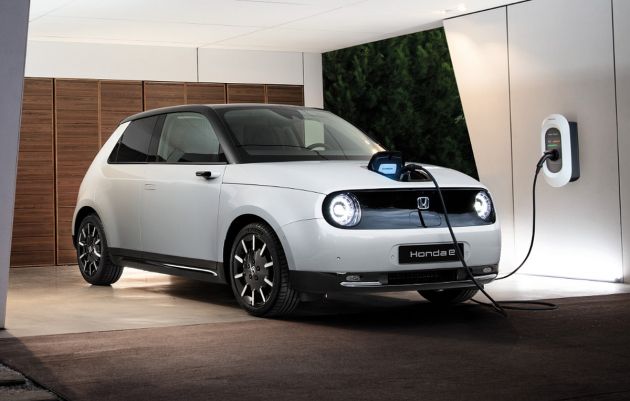











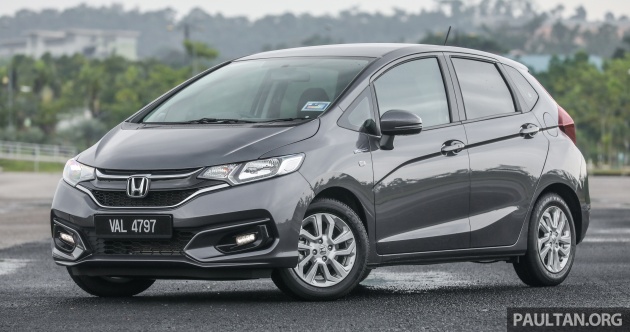




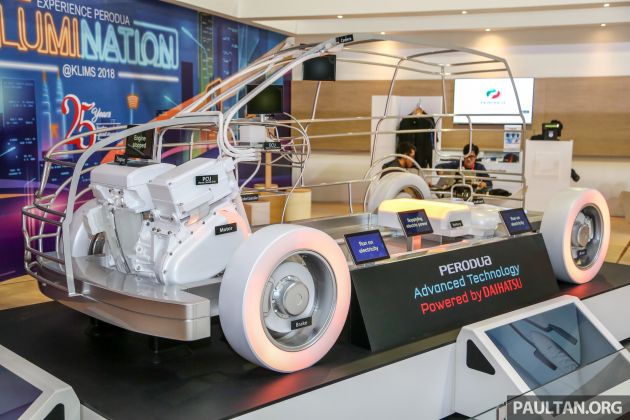
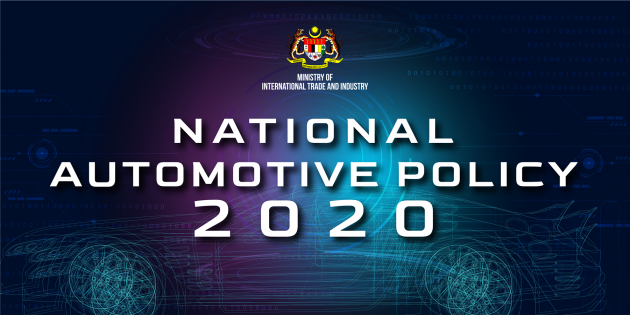



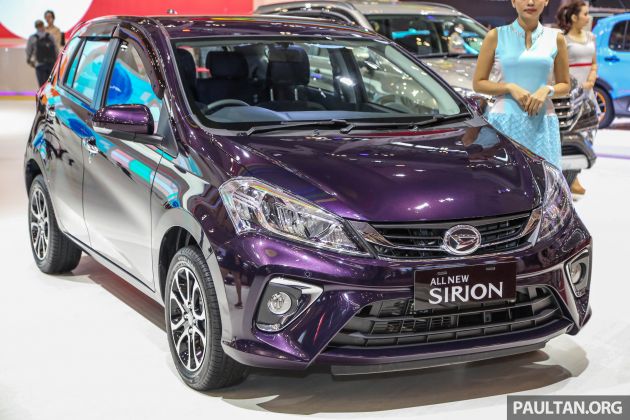


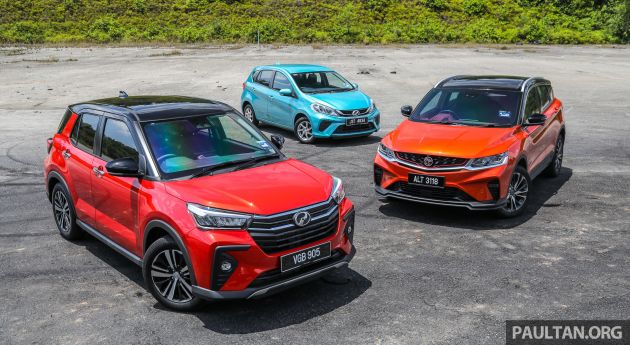
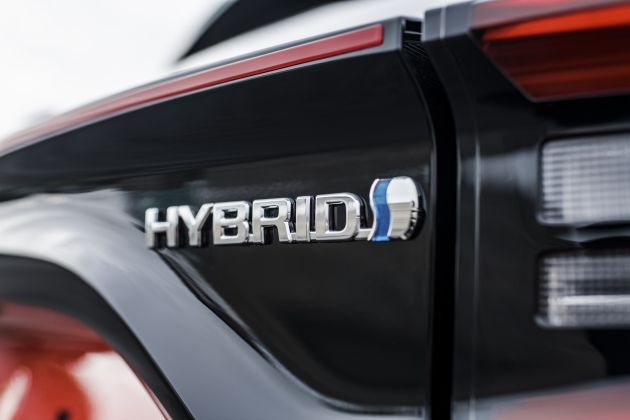

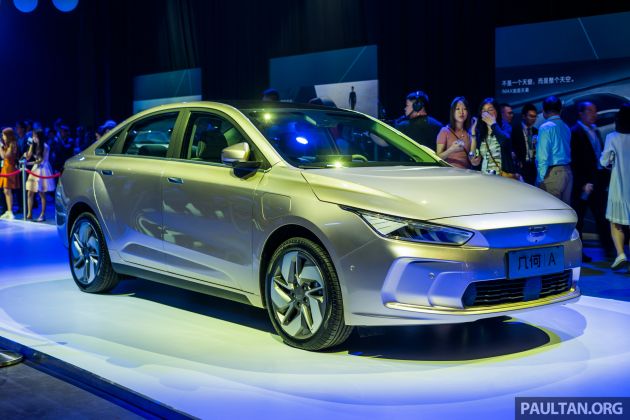
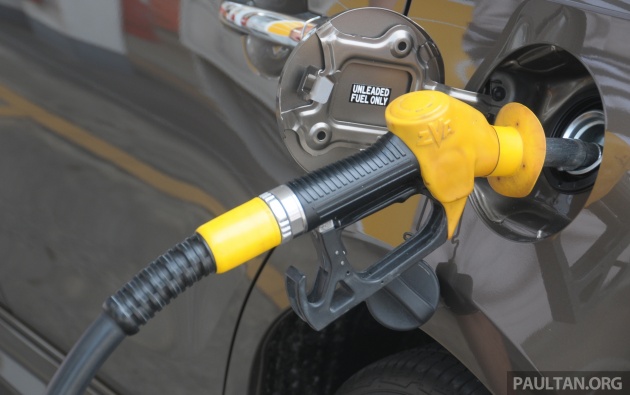
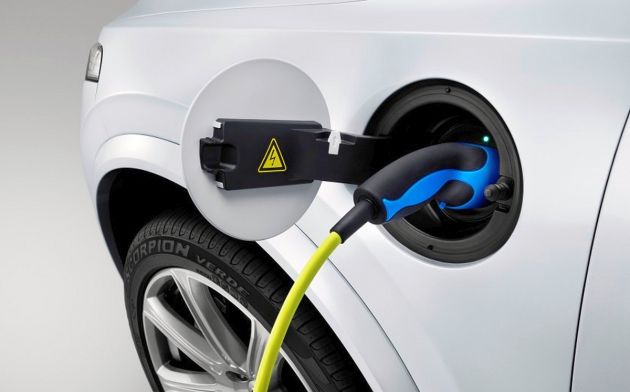
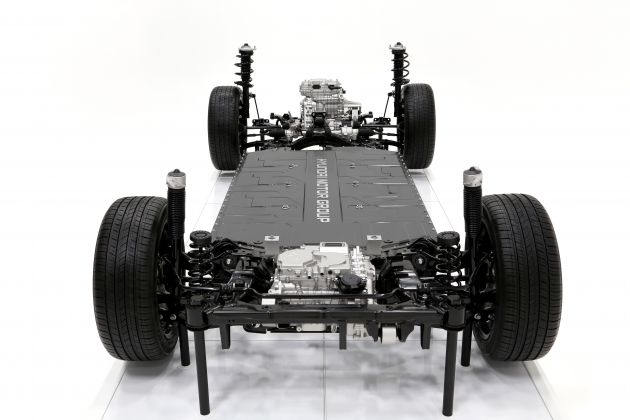
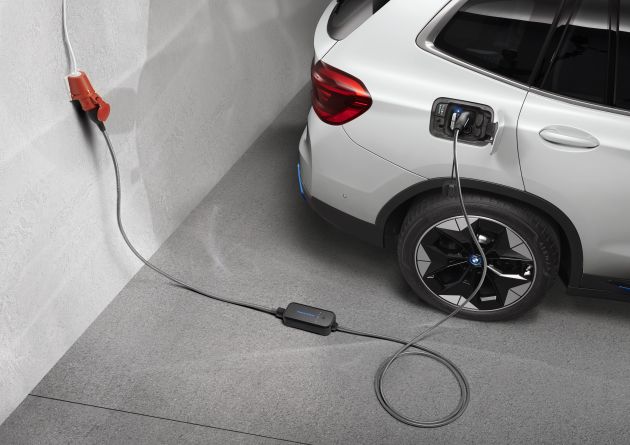

I’m putting my hopes up for an affordable Geely-Proton EV for the masses, in the near future! I believe that’s going to be one of the few avenues for an EV that won’t break the bank. Otherwise, there’s also a bit of hope when one looks at D.I.Y. electrification that’s happening in the U.S. That’s another glimmer of hope since the world, after all, is united by Youtube!
EV in Msia will never be viable if cost of charging is costlier than petrol. Even with today’s higher crude oil prices, it still is cheaper compared to electricity for charging.
I think we should have someone to replace the mr.mani then only it will work.
DIY is seem to be the option here. Anyone interested to do DIY? Any bengkel keen to move on to EV conversion business? Can form up a club to learn together. At the end is win win situation.
Bro..I think there is another article saying EV conversion is not legalized by JPJ. That’s another big idiot hurdle to get pass.
This is how you know Malaysia is in trouble — when the masses can only rely on a single manufacturer or two to make this work
Is it accurate to use 62kwh battery and assume charging without energy loss?
Most EV running reality is at 18-23kwh/100km.
I used the Geometry A as a somewhat realistic sample due to the Geely-Proton connection. And yes, it’s a simplistic calculation of taking the full range and battery capacity, but it’s a necessary one for easy understanding.
Also, I personally know of a few people I trust that have driven the Geometry A in China to more than 400 km per charge, and that’s obviously with some charge left at the end (not absolute zero). So I think the calculation is accurate enough for that particular example.
My average energy consumption of my 1st gen 2014 Renault Zoe is 13kWh/100. I just reached 70,000km mileage on my Zoe yesterday & the battery State Of Health (SOH) is still around 93% – 95% after 7 years OTR.
Lithium ion battery pack is the least of my concern as I believe with an active air cooling system, it can last up to 15 to 20 years. Other component will wear out first while the main battery is still running strong.
To Zuhril, interesting you note that the battery life on your Zoe is still going strong, 99% of Malaysians complaining about hybrid/EV reliability are people who don’t own the cars. Had owned a few hybrids, none of the issues I had has anything related to the hybrid drivetrain. Had mates with hybrids going up to 200,000km with original battery pack. The fact is that batteries are lasting longer than what the manufacturer suggested.
The is so many caveats about the running cost when you ignore the white elephant in the room which is battery replacement cost. Maybe you assume by the time our EV policy is made clear, and affordable EVs starts to appear, we’d all be rich and can replace them every 6-7 years just when the original battery is about to kaput. Oh wait, even the rich are angry with these high prices of replacement battery, remember the viral on that RM120k battery replacement?
(https://paultan.org/2019/03/13/mercedes-benz-malaysia-hybrid-battery-extended-warranty-rm2688-for-additional-4-year-coverage/)
And while the article is long it glosses over another major concern of Malaysians which are range anxiety as charging stations are not readily available everywhere (and I mean EVERYWHERE even in backwater kampungs) plus with Msian maintenance mentally how many would still be operational after few years.
And I’m not done yet as you missed out on YET ANOTHER elephant in the room which is the super low RV of hybrids, PHEVs & EVs, mainly due to 2nd or 3rd buyer will mostly likely have to fork out a hefty sum to replace the battery cells even before taking ownership, that is, provided the manufacturer still produces these batteries. Imagine trying to find fresh OEM battery pack for a 10 yo Samsung Galaxy S3. Again it goes back to paragraph 1.
So while waiting for langit & prices to turun, and for the technology to mature with reasonable range, instead why automakers are not bringing in more hybrid models? Hybrid batteries are smaller and therefore far less expensive to replace and it has no range anxiety problems. I see only Honda is actively doing so and doing it via the CKD route so there is no excuses for Mazda or Toyota et al for being so late to the local scenes (https://paultan.org/2021/07/06/umw-toyota-to-ckd-locally-assemble-hybrid-models-corolla-cross-corolla-sedan-camry-are-possibilities/). There is absolutely no excuses as Toyota are masters of the hybrid game. So the big question is, where are the Perodua hybrid cars?
Yes, NAP2020 is the big bugbear but guess who made it that way? Maybe it is high time our politicians stop politicking and let the current government to revise NAP2020 into something more detailed & substantially workable for all parties. Fat chances that would happen.
well commented enginner. The article is a misrepresentation/ purposely missing out vital information in order to push his agenda. Probably coming from the lobby group or sponsored article.
My lifetime energy consumption is 170 Wh/km for a Model S
Saving up for a BMW i4 then if Tesla Model 3 doesn’t officially comes to our shores.
To be honest, I’m a malaysian who works and lives in China, i think BYD Han or Aion is awesome and I really hope someday they would make right hand drive version and sell it in Malaysia at a reasonable price.
How about incentivize BYD to manufacture just their Blade battery here .. Any advantage to us?
Will we later have politicians shouting about selling off to China? If no then pls proceed.
Yaa you are right, there are many outstanding brands in China now a days.. I live here in China as well, U can see the EV development is rapidly move.. canggih loo
Good article :D
Maybe can talk about the Yamaha EV motor which is sold for DIY. But then that wouldn’t practical either due to our EV tax structure. We are practically stuck.
Don’t trust Geometry A figure. It’s also not an attractive EV.
I check BMW iX. 20kwh/100km as per WLTP standard.
At 20% above wltp to be reality, it’s gonna be 24kwh/100km
That’s 24 x RM 0.57 = RM 13.68 for 100km
That’s translate to RM 0.137/km.
Which is similar to a car running at 15km/L only, very lousy.
Many car runs better than 15km/L.
wah, you simply say 20% above WLTP is reality to twist the facts to suit your angle? why dont you ask real EV owners in malaysia what kind of kWH/100km they get? and what a funny comparison, can a ICE car the size of BMW iX run 15km/L? it’s a big SUV the size of BMW X5 you know.
https://paultan.org/2012/09/14/nissan-leaf-test-drive-review-six-weeks-with-an-ev/
Tested by Paultan other team member,
Nissan Leaf small car –
1785km @ 361.4kwh charging consumption.
This is equal to 20.2kwh/100km for a small hatchback
Nissan Leaf is sub 1500kg weight EV, and a small Tyre of 205/55R16 that time.
BMW X5 PHEV runs better than 15km/L, it’s rated at 2.5L/100km or 40km/L.
At 20% higher, it’s still only 32km/L.
EV supposed to be better than PHEV, at 15km/L Malaysia rate, it’s a U turn. Hahaha
https://paultan.org/2020/06/17/2020-bmw-x5-xdrive45e-phev-launched-3-0l-turbo-394-ps-77-km-electric-range-rm441k-without-sst/
This is more economical, and no worry of Electric runs out.
You are comparing the original Nissan Leaf from 2012. EV tech has come a long way since.
As for the X5 PHEV – or any PHEV, really – don’t even bother with the claimed fuel consumption figures. In my own tests last year, I averaged around 11.5 l/100 km or just 8.9 km/l in the X5 xDrive45e.
Myth busted. BMW rated figure cannot be trusted. IX rated 20kwh/100km cannot be trusted too.
wah how come you don’t believe EV’s rating but you percaya PHEV rating bulat bulat… hahaha!
If you read, GenZ is calculating both at 20% above WLTP, that is for both cars.
Indeed hybrid and PHEV has no issues of range anxiety that our locals here do have.
After 64,000 km my average consumption is 170 Wh/km in a Model S
I think one major point you did not elaborate about in detail is the infrastructure. I booked an IX and am now considering to cancel it. Simply coz in real life BMW just can’t give me assurance that I can drive from KL to Penang without charging in between. On paper it’s doable but if there is traffic and in real life conditions u may need a tow truck. Even if we reach a charging port at rest stops, we may have to wait or it could be out of order. Also means no detour even in emergency cases. Luxury or not, infrastructure is a major issue. Every time you drive out we have to be very carefull it’s fully charged and be aware on where is the nearest charging port just in case. As u never know when we will get stuck in a 2 hour traffic and watch ur battery being drained. This is very important as I had experience even in UK (Tesla model 3) where the first thing u do before starting a road trip is drive 45 min the opposite direction to find a charging port that is not occupied, wait 1.5 hours for my turn and then start my journey as the hotel I was staying did not have charging ports in that area. Now imagine we had EV’s priced sub 100k. But those thousands who stay in apartments, where are they going to charge? Even luxury condos or office buildings don’t have this facility. My office building don’t even allow us to use their power points for a plug in hybrid. Asking us to only use the 4 charging ports they have dedicated just for show so they get the green building status. When they have like a 600 bay parking lot.
JomCharge has 50 kw DC fast charger at Bukit Ganting R&R both ways, KL bound and Penang bound. DC chargers are so much faster, your stop doesn’t have to be long at all. Don’t think of the stop as a multi-hour AC charging stop.
https://www.jomcharge.com/our-chargers
JomCharge has a total of 5 DC fast chargers on the highways – two at Bukit Gantang R&R, two at Ayer Keroh R&R, and one at Skudai.
Recommend downloading PlugShare as an EV owner, can browse all the available chargers around Malaysia.
That’s the whole point. Even at 10 it will not be enough. that is lots of waiting for everyone that needs to take their turn. Same issue I faced in UK. Don’t get me wrong I applaud BMW for taking the leap here hence cancelled the order for the IX40 and I’m in queue to get the IX50 (if they decide to bring in) with 600 plus km range which gives me some please of mind.
if you have range anxiety then your decision is the right one. the biggest battery/range within your budget. 50 is coming. sure no issue bringing in, its cbu.
iX50 is coming here in future
Very good point! That’s why I praise Toyota approach on the hybrid, or even the e.hev by Honda. At least you won’t get stranded else where.
Nissan had their e-power but no where in sight in Malaysia. Is Tan Chong even considering this?
Tan Chong is studying(read: sleeping) on it.
See, even in UK its charging infrastructure is lagging. What more Malaysia and our gov..
Buy one small generator lorrr ..if any thing can become emergency backup ..
Just give Elon musk a datuk seri title and we get cheap Tesla soon…
Would he even care for that title? Means nothing considering how easy it is to get it if you have money.
Promoting EV is mainly for environment and of course to reduce the rely on petroleum which benefit only to some countries with produce of petroleum.
Back to EV the problem isn’t infrastructure but it rather because of Malaysia is producing petroleum which contribute very much income to country. But whether we like it or not EV is future trend, 10 years down to the road I assume Malaysia at least 20-30% of new cars sold will be EV.
The current EV models launched in Malaysia basically is rich man toy, expensive and less practical due to short driving range.
Many people concern the real driving range is about 300-400km is too short and not suitable for long distance drive. It is true but how many of us driving beyond 100km a day? Probably less than 10% people and these people can actually still use EV because soon we can easily found the EV charing port in all highways soon. Majority still travel less than 60km a day and 1 full charge is enough for 4 or 5 days travel and this has factor in traffic jam and aircond on.
Yes the port is limited but how many EV cars will use it, only frequent traveller will use it at this moment if they drive EV. Otherwise most people will choose to charge at home. Staying in condo or apartment worry no charing area. No worry when EV car become popular most petrol station will standby at least 2 charging ports while R&R will easily put 5 to 10 slots for charging port. Difficult to set up charing port? It is much easy than setting up petrol station, the charing port size is as small as ticket machine. so the lack of infra is not the excuse of not having EV.
The main concern now on EV is the battery cost and lifespan. The lifespan of battery seems short, approximately below 200k km. If we buy an EV cost RM 160k, the battery replacement cost may hit RM 100k while the car may only worth of RM 40k in used market (EV car always have bad resales value). At this moment only China BYD blade lithium battery can use up to 3000 charging cycle and 1.2 million KM (1 charge giving 400km range estimated after factor in traffic and aircond). Even if this may not be realistic but if can achieve 1/3 it mean it still can last about 400k km range which is still super impressive.
But if I’m not mistaken, petroleum that is produced in Malaysia actually isn’t used for cars? NO? Afaik the companies import it? I might be wrong tho.
As long as there isn’t a clear EV roadmap, most manufacturers won’t even think about selling EVs here. What happened to the EQC that was supposed to launch last year? The MG ZS EV? Companies like Audi hasn’t even mentioned about taking the E-Tron in. All the targets that have been set previously to improve the infrastructure has failed. We’re lucky that BMW is bringing in their EVs because otherwise, our EV market would only consist of the Leaf (which isn’t a good EV tbh), the Mini (overpriced for what it offers) and the Taycan (which is a pricey EV that can only be afforded by the rich). I really hope that the government will clear up the roadmap soon and maybe announce incentives for companies to take EVs in. Why not abolish the petrol incentives and use them towards EVs instead? Lower tarrifs for EV owners? And frankly, the road tax pricing for EVs are utterly ridiculous right now. When would it be fixed? And where’s the incentives towards companies to set u charging stations? The UK, US didn’t get to where they’re at now by doing nothing, and like this article said, even our neighbours (TH, SG & ID) are a few steps ahead of us at this. They’re announcing incentives to lower the prices of EVs and for companies to set up charging stations. It’s crazy to see how behind we are when you take a step back and compare us to other countries. If the EVs here are still going to cost so much due to the lack of incentives, I don’t see how our EV situation will improve soon. How many people can afford the Leaf, let alone the only good EV on sale here now – the iX? Why would the people that can afford a Leaf or the Mini want to buy them when they can literally get MUCH better cars for the price? Camry, Accord, CRV, 3 series, C class? And the Leaf is currently the most affordable EV here that you can actually drive on the road. Let that sink in. Do something pls Malaysia. The NAP has been all talk and no go. Wasn’t it supposed to be announced in July? We’re in September now for god’s sake.
Legacy of Dr. M’s rule.
Best write-up, well-researched article.
Yes, this comes down to policy. I think I’ve read somewhere comparing US vs EU policies on EV. EU has more consistent policy (all EV must use the same plug for example) and incentive (no ICE after 2030s) so adoption rate is higher. Sadly here, your right, we don’t have any clear policy. In fact, we don’t have clear policy on anything right now. Everything is just made as we go…
one must understand EV, here in Malaysia, buying a car must fulfill certain criteria,
Price, Specs, Features, running cost, fuel efficiency. spare parts and most important of all Reselling value.
For an EV, technically we enjoy a short period of time for some of us trying to safe a penny or 2 in buying a hybrid. But in the end. when u sold the car u have given back all those pennies to the depreciation of the car value.
So many had learned their lesson well. not to say EV is bad in anyways. but generally because most of us could not see the benefit of having one. For those who live in the city, or Jam packed areas, come out from home jam until office, come home from office jam till reach back home. yes. this is most beneficial. probably u dont even use a single drop of petroleum. this is where EV works well. plus u dont combust any CO2 at all while commuting.
On the other hand. when u need to travel long distance which is not often. u might run into 1 issue, while stopping for a recharge on a Pure EV. U probably need to wait hours or 1/2 hour to get them charge. we talking about those days. unlike petrol. i just stop, pump 5 min or so, im on my way. no fuss.
So in the future it would be a combination of
EV and hybrids or hydrogen Fuel cell to accomodate the use. I can see that in the next 5 to 10 years or so, a family would have a EV or a hybrid for daily commute. For long distance probably a hydrogen fuel cell. this is taking consideration that petrol is RM 50.00 per litre and we are on hydroelectric power. HYdrogen filling station is abundance and can fill up in a short period of time just like petrol.
Otherwise. with the price of EV’s only for the top tier ppl. ICE will still be the first choice no matter how the government promote EV and green energy, its all talk, but nothing to show. Well our MAI and MITI is best at this, talk talk talk. but nothing happens. all those automotive policy is a joke, its moving backwards.
nothing solid to really encourage a solid ground for manufacturers to invest into Malaysia, its u turn policy makes company doubt tomorrow.
the best we have seen so far is the CBU hybrids which once flooded the roads with priuses, CT200H’s Cmary Hybrids, Hondas hybrids and so on. now its like hybrid ah, later change battery mampus engkau.
So that’s my take. But the future holds in how Malaysians mind set in purchasing a Vehicle. Not so much about what the technology has to offer. do u think most Malaysians will care how many CO2 does the car emits. Probably not. Cause we are not educated in such a way. we are educated in terms of brand, resell value and reliability and spareparts abundace and how much to maintain. Its never about how many CO2 it emits.
Kudos despite the english use here is not as canggih, this comment makes more sense about EV adoption than the article itself.
Resale value will increase if demand is higher. And how to get higher demand? By not sticking to old outdated notions about car buying.
Why do you think our market lack options? Everybody sticking to the “safe option” even though IRL the “safe option” = horrible option. Start buying & promoting the hybrid Hondas & Toyotas, then you’ll see hybrid RV increase.
Have you seen Malaysian perception and low 2nd hand value of Korean cars. Nearly impossible to change that, and as much difficulty as improving RV of hybrids & EV.
Bro Hafriz, tolong buat artikel perbandingan motorsikal elektrik yang ada dijual di Malaysia. TQ
Mohan’s area
The other issue here is the availability of charging stations, bad resale value for EV or Hybrids. If you want people to buy the infrastructure has to be there. Moreover the spare parts for EV is much more higher than fossil fuel vehicles.
Other than battery what are the parts EV car is more expensive than ICE car? You surely do not know how EV car manufactured. The motor itself is super duper long lasting without any maintenance needed or at best some grease needed after few hundreds KM ran. No fan belt, engine and gear oil, spark plug, ignition coil, oil filter, injection, or even radiator. 1 set of brake pad can last more thab 250k km. 1 friend driving Tesla recond told me he only change wiper and tyres after driving 150k km in 4 years time.
snother issue is the road tax.
Not ready and will never be ready.
Hafriz bro….Very well written article, takes into account ALL of our malaysian motorists idiosyncrasies and even managed to be funny to boot. TQ keep it up.
other countries or some carmakers will even stop producing ICE cars, i doubt i will even lived to see that day. malaysia just lack so far behind even compared to automotive industries in thailand
Malaysia automotive industries lack behind Thailand? You drunk in day time? What are we lack behind? Like it or not Malaysia will eventually involve in EV and Proton and Perodua has to produce EV car in 15 years time. Proton is very easy to produce by rebadge Geely model.
Another issue with EVs is that typical Malaysian tend to keep cars longer than their western counterparts. Just look at our 9 year loans and significant chunk of our disposable incomes. Any major maintenance needs (say battery replacements) will put paid to whatever EV ideas…
Infra is a big issue. Major benefits of an EV is city driving…but unfortunately, even if we get cheap EVs for the masses, there is no way we can keep them charged as our place of living (say from mid cost condos) lacks any form of charging infra. Only users that have a landed property may consider them, when they do get cheap.
I don’t see cheap EVs taking foot for a while even if the government waives all taxes on them.
Without Proton, most the problems mentioned above will be solved.
Do explain in UK today where Proton does not exist anymore, why is EV car 30% to 75% more expensive than equivalent ICE cars?
You have seen the EV examples in other countries cited in the article. When were they cheap? Some of those countries, like China, subsidized EVs by the way, and yet, they were not cheap.
It’s a myth that Westerners don’t keep their cars longer. The average age of cars in the US has risen to 12 years. In EU it’s 11.5 years. Only in Asia are we replacing them much earlier, at 6.5 years.
Anecdotally this may be true – I’ve changed cars 3 times in the past 10 years, all of them new. The only reason why many of us have a significant chunk paying car loans is simply because Malaysians often live beyond their means – just started work but already dreaming of buying a Honda/Toyota.
https://news.ihsmarkit.com/prviewer/release_only/slug/automotive-average-age-cars-and-light-trucks-us-rises-again-2019-118-years-ihs-markit-
After solid state battery reveal in 10 years time the EV car can last longer than 15 years. Solid state battery is lighter in weight, higher density for longer driving range (50% more at least) and very long life span than the lithium battery. It can last approximately 5000 charge cycles and easily can give 1 million KM range before the battery needed of replacement.
To me when EV car receive solid state battery, it is not game changer, instead it is game over for many industries. Even for car manufacturer once they sold a car to end user it may takes more more 10 years to
It may takes more than 10 years to see the customer come back to change new car. Many car spare parts company gonna bankrupt because EV component is very much lesser than ICE car. Battery company also crying coz the solid state battery super long lasting. So people paying 9 years loan probably the car can last 15 or 20 years. Bank also crying coz car is super long lasting people take 1 time loan and use the car more than 10 years.
Fantastic article, I thoroughly enjoyed reading. Bravo Hafriz ! This is what quality journalism reads like. Genuinely getting to the root of the problem, asking the questions that really matter, and giving frank answers.
In the last few months, more and more local media have voiced out our country’s sorry performance in the EV rat race. Good. Tell the people what they need to hear, not what they want to hear. Make them angry. That’s the only way we’ll get any real change to happen.
I still think the biggest reason why Malaysia is lagging behind among ASEAN peers is simply because we feel we have nothing to gain in the EV rat race. We do not have vast natural resources for battery manufacturing, our air is still breathable, we have our own cheap petroleum reserves, we aren’t reliant on CBU exports, we think we’re doing well enough, and some of us still look down upon our ‘poor’ neighbours. Unfortunately, whether we like it or not, EVs will become more widely accepted in time. We may not have an advantage in the EV rat race right now, but if we don’t compete today, we will end up disadvantaged eventually.
It’s not too late for us, right now the onus overwhelmingly lies on the government to provide clear-cut EV policies and incentives. Some car companies have been waiting years for the big signal, others will get the memo eventually. Utility and infrastructure companies are already working with GLCs and car companies, the charging grid will be built-up over time. The Malaysian consumer is demanding, true, but we’re also more car-concious and tech-savvy than some of our ASEAN neighbours. It won’t take much to get the ball rolling, once word starts to spread.
Malaysia might not have what it takes to win the EV rat race, but that doesn’t mean we should just give up and finish in last place. Surely we can do much, much better than this… right ?
“…and some of us still look down upon our ‘poor’ neighbours.”
“but we’re also more car-concious and tech-savvy than some of our ASEAN neighbours”
Yea, some of us.
if it’s EV but no features like the BMW IX Low spec,
no adaptive headlamps
no ACC/L2 Autonomous
no lane keep
it’s quite lousy.
If it’s like Mini Cooper SE with a top speed of only 150km/h. I would feels like I am living in 1980s driving an retro Electric Car. It also dont have ACC/L2 Autonomous.
Well, you can opt for full spec since there are 4 variants of BMW iX. That’s up to you. Both variants have Driving Assistant Package with AEB. Sport package comes with ACC/L2 Automonous and lane keep assist. And iX doesn’t come with adaptive headlights but only come with high beam assistant
High Tech
= Save Time
= Save Energy
= More Features
= More Mileage
Many cheap EV and low spec EV are pretty meaningless.
so much compromise to ICE vehicle.
Great article bro Hafriz. Bravo!
Hafriz is really having a lot of fun at taking a swipe at Malaysians. Sadly, it is what it is. Not that I encourage expediency but true change has to come from the top down. The rakyat’s mindset will never budge on its own. Sometimes I wish there were more policy makers going through the comments instead of indulging in their own delusional state of contentment.
The politicians comes from the rakyat, so it goes than politicians mindset are the same as those who voted them. If the rakyat won’t change, it won’t change with the politicians as well. Even globally accepted policies that are not in tune with the rakyat ie GST, will fail no matter who pushes it.
We are paying more or less the same price for the iX here compared to the UK (£69,905 or RM401,892.10). That does not make it any more affordable but if you can afford it, that’s a hell of a deal.
The Nissan Leaf by comparison costs 50% more in MY compared to UK. I have not seen one on the road, yet.
One current model that may be suitable for Malaysia is Renault City K ZE. It is much better than a toy, and is basically an Iriz/Myvi grade car. Without taxes, it can probably be sold at 60-80k MYR.
Very very good writeup by Hafriz. Buy EV if you love the environment. Sustainability is a very important agenda. If we cannot afford to buy EV, buy PHEV instead. If we can’t afford to buy PHEV, go ahead and buy EEV cars. Malaysia is a demand driven country. With more people driving EV or PHEV cars, charging point will follow soon. It will be a business proposition for private players.
Well written article. That’s what I been waiting to read. Now we know where we are for EV. Keep update from time to time because obviously in future EV is the way to go. When? Very much depend on gov tax and initial price. Running cost depend on TNB charges. BTW, I also like to read what happen to flying cars development? Drones uses battery. Perhaps future people can opt to choose between EV, ICE, flying EV or flying ICE? Would also love to read about this.
This is simply because we are low income country. At developed countries, engineers that promoted to chief engineer or manager can own 5 series or E class comfortably. I am in the same position can afford the same car but it will be a big portion of my salary where I will prefer to save the money for emergency (medical fee in Malaysia also very high) and education fund for kids (disappointed with low standard of local Us).
What Malaysian needs? I brang my kids for near by tour. No getting out of car but just cruising near by. I was on right lane driving slowly because there would be junction to turn right. A racing car (Perodua Activa) could overtake me from the empty left lane but purposely went to opposite lane direction to overtake me even a car came from opposite direction with warning of high beam and horn.
What I want to tell is Perodua witg the EEV incentices, will not waste time to develop EV. Just need to offer turbo car with low price so that racers afford to but their racing cars.
There should be a JV among automotive companies for an EV battery plant here and there must be some sort of guarantee by TNB that tariffs will not be raised for the next 10-20 years in order for EV’s to be more widely accepted.
LOLwhut! Would you be willing not to raise ur salary for next 10-20 years? Don’t make demands to others that you urself wont.
Eventually it comes down to money & right now most people can’t spare much of it…
Hats Off Hafriz Shah! Awesome article! Very informative and clear!
If I can get a cheap EV, will I want one? Unless I already have an ICE car as primary transportation, no I won’t.
I need vehicles that can reliably be used immediately, or at least can be ready with in just a few minutes with a visit to the fuel station. With phones, at least you can use a power bank to extend its battery life in an emergency.
Maybe once the battery, infra or charging technology can keep a car to always be available, then I might think of owning one. It is a pity the government stopped the hybrid incentive years ago, as it was the most logical step before the move to EV.
From what I know the EV battery disposal/recycling environment is still a mess. Maybe that’s where Malaysia can come in, since we have experience as one of the largest plastic waste dumping ground in the world. Go convince someone at the top that we can profit a lot by “processing” all those used batteries. Then perhaps they will start looking into having more EVs here, and we can get all those shiny new EVs. Let the grandchildren figure out how to get rid of those toxic materials.
The hybrid incentives are still around mate. This time it is geared towards automakers assembling their hybrids here as with what Honda is doing.
Probably time to update this view on the way forward, given the latest zero tax on EVs, and what this could mean for the local EV market. Could players like Wuling take a stab at selling their cheap mini-EV or nano-EV here, or the Roewe E50?
I probably would consider a Kancil sized EV if it can be had for really cheap, ~MYR30k, even if it only has a slow charger. It could serve duty as a local town runabout. Because at that price range, it will be competing for the low end market with the some inherent benefits from zero tax.
Great article Hafiz…full of facts…feel sad on our political leader which not look deep into this. they only fight for the power and not look in long term…hope there’s bright in end of our EV issues in Malaysia
Saya bicara dalam Bahasa Malaysia sahaja. Berdasarkan pengalaman menggunakan kereta bermotor, salah satu perkara yang berisiko menggunakannya adalah penyelenggaraan atau maintenance. Masalah besar adalah bukan pada masalah kenderaan bila perlu penyelenggaraan tetapi pada usahawan mekanik yang bermain taktik kotor dan hanya memikirkan wang, bukan berniat untuk servis yang baik. Ada mekanik yang mahir tetapi disebabkan akhlak dan nilai moralnya yang buruk, maka servis yang diberikan juga turut menjadi buruk. Saya percaya bukan hanya saya yang mengalami masalah ini, bahkan ramai yang sudah ‘terkena’ dengan mekanik yang tidak jujur. Beratusan ringgit bahkan ribuan ringgit kerugian yang dialami oleh pelanggan dan pemilik kereta namun hasilnya masalah pada kereta mereka tetap berterusan. Hanya segelintir sahaja mekanik yang jujur dalam bisnesnya. Bagi saya, kereta elektrik akan menyelesaikan masalah ini. Masalahnya bukan hanya pada konsumsi petrol tetapi juga penyelenggaraan kereta apabila kita bicara tentang kereta bermotor. Dengan adanya kereta elektrik, tiada lagi penyelenggaraan yang banyak serta tidak lagi berisiko berdepan mekanik yang majoritinya tidak jujur. Saya sudah menggunakan atau memiliki 4 kereta, yakni Kancil, Atos, Myvi dan Renault Kangoo. Saya juga telah berdepan hampir 20 mekanik disekitar Selangor dan KL, rata-rata servisnya tidak baik. Kadang-kadang perkara yang mudah, seperti menggantikan break hose, bila pasang semula tayar setelah ganti hose break yang baru, tayar tidak pasang betul, hingga memberi kesan kepada shock absorber. Ada yang buat wiring di bahagian stick lampu, setelah buat itu, mereka pasang semula stereng dlm keadaan senget. Ini baru berkaitan dengan perkara yang mudah, belum lagi soal enjin, radiator, gear dll. Ya, mereka sebagai mekanik memang ada ilmu tentang membaiki kereta, tetapi how good are they in doing it? Sejauh mana kemahirannya dalam membaiki? dan sejauh mana pula akhlak dan moral mereka dalam menjalankan bisnes mekaniknya? Saya hanya memberitahu pengalaman saya, mungkin orang lain mempunyai pengalaman atau nasib yang berlainan. Jadi, saya percaya kereta elektrik ada solusi kepada penyelenggaraan kereta bermotor yang berkos tinggi serta servis yang tak baik akibat berdepan dengan para mekanik yang tidak jujur dan tidak berakhlak itu. Malah tidak perlu pening lagi memikirkan masalah enjin, gearbox, radiator, timing belt, kipas, petrol, minyak gear, minyak break, minyak stereng, minyak enjin dan banyak lagi. Harapnya kereta elektrik Malaysia akan dijual tak lama lagi.
semua itu betul sangat encik